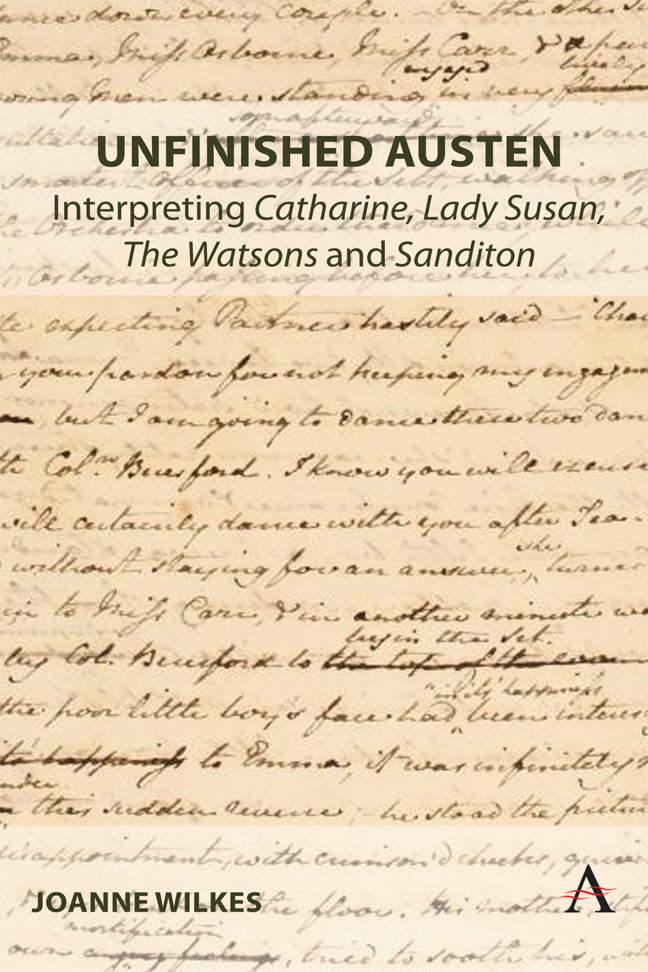 Unfinished Austen
Unfinished Austen 3 - Lady Susan
Published online by Cambridge University Press: 29 February 2024
Summary
The emotional centre of ‘Catharine’ is arguably the protagonist's bonds with the Wynne sisters, her close friends from childhood who are now forced to be geographically distant both from Catharine and from each other. That is, the story was not self-evidently heading towards a courtship plot focussed on Catharine's entanglements with prospective suitors. In Lady Susan, the world of the story is dominated by female interactions. Except for a narrative ending, the text consists of 41 letters, 36 of which are written by women: the other five are produced by men, but only two of these are between men. The strong family and friendship networks salient in the text are those among women, primarily that between Lady Susan Vernon herself and her friend and confidant Mrs Alicia Johnson, and that between Mrs Catherine Vernon and her mother Lady de Courcy. A major driver of the plot, too, involves the two women who, although they do not write to each other, are the most prolific correspondents in the text: sisters-in-law Lady Susan Vernon and Catherine Vernon.
Catherine Vernon is from the outset suspicious of and antagonistic towards Lady Susan and never alters her attitude throughout the story, while Lady Susan identifies Catherine Vernon as the greatest obstacle to her plans and would very much like to disarm her hostility. Lady Susan can sometimes reduce Catherine Vernon to silence – their verbal antagonism is never overt – but she fails to make a friend of her enemy. On the other hand, Lady Susan has in Alicia Johnson a close ally to whom she expatiates on her feelings and explains her ever-changing plans. Although much of Lady Susan's activity is centred on men, including an adulterous liaison and two potential marriages for herself, the text conveys the impression that her closest emotional bond is with Alicia Johnson.
Lady Susan is a very different kind of fiction from ‘Catharine’, however, not just because it has a mostly epistolary format but also because its primary dynamics are those of older, sexually experienced women. There is a younger potential couple, in Catherine Vernon's brother Reginald and Lady Susan's daughter Frederica, and the narrative summary at the end suggests that they will wed. But throughout most of the text, Reginald is manipulated by Lady Susan (and to some extent by his sister), and Frederica is habitually cowed by her self-willed and self-confident mother.
- Type
- Chapter
- Information
- Unfinished AustenInterpreting <i>Catharine</i>, <i>Lady Susan</i>, <i>The Watsons</i> and <i>Sanditon</i>, pp. 31 - 52Publisher: Anthem PressPrint publication year: 2023


